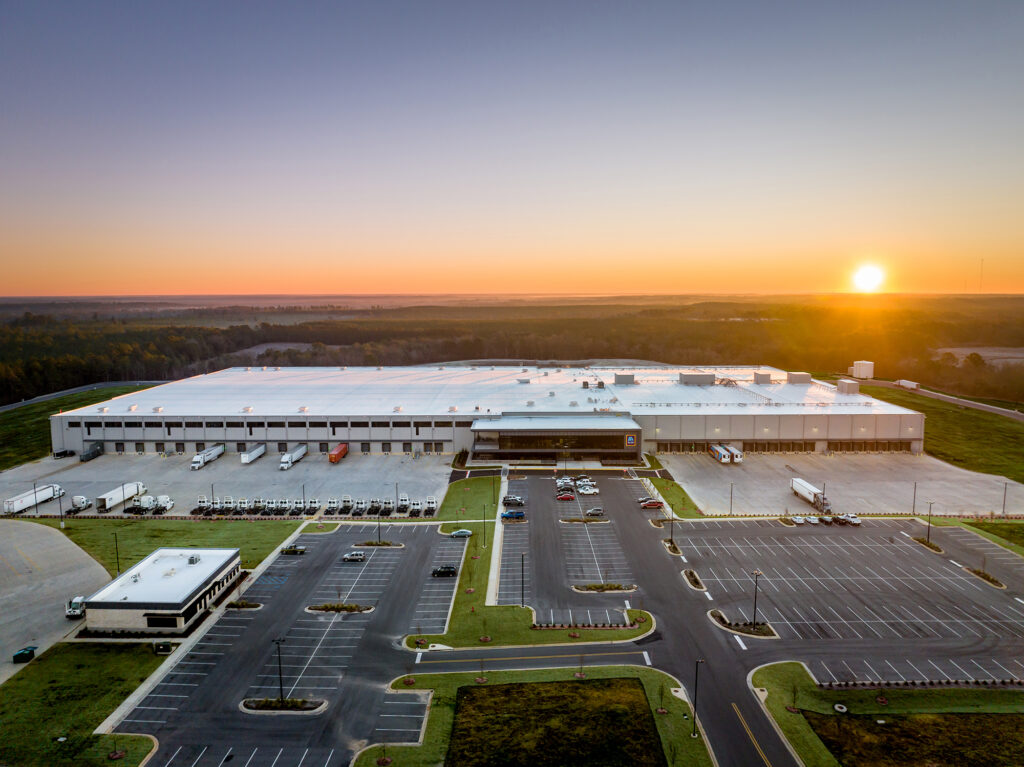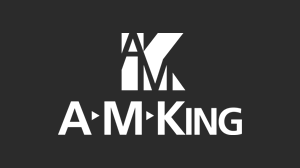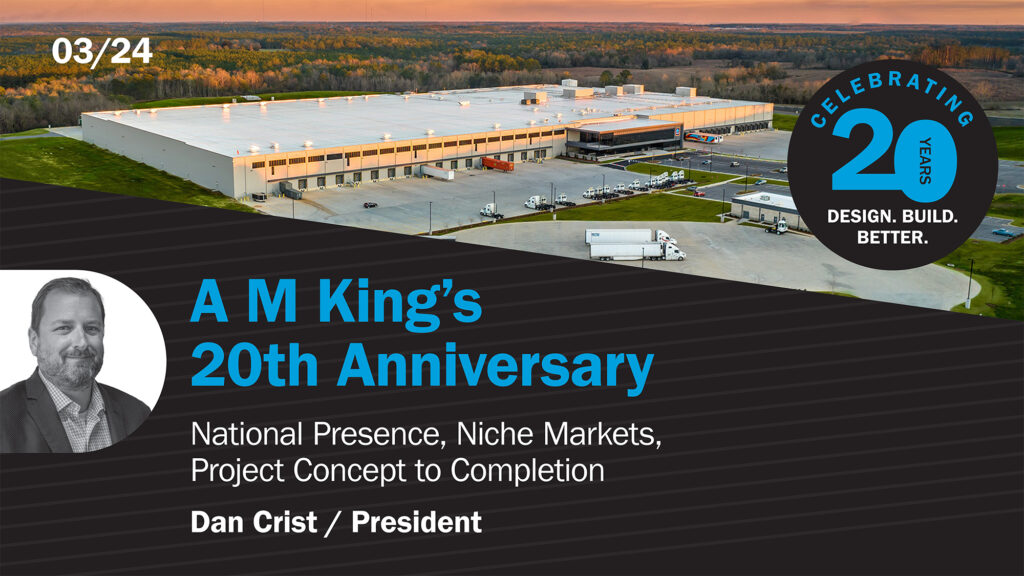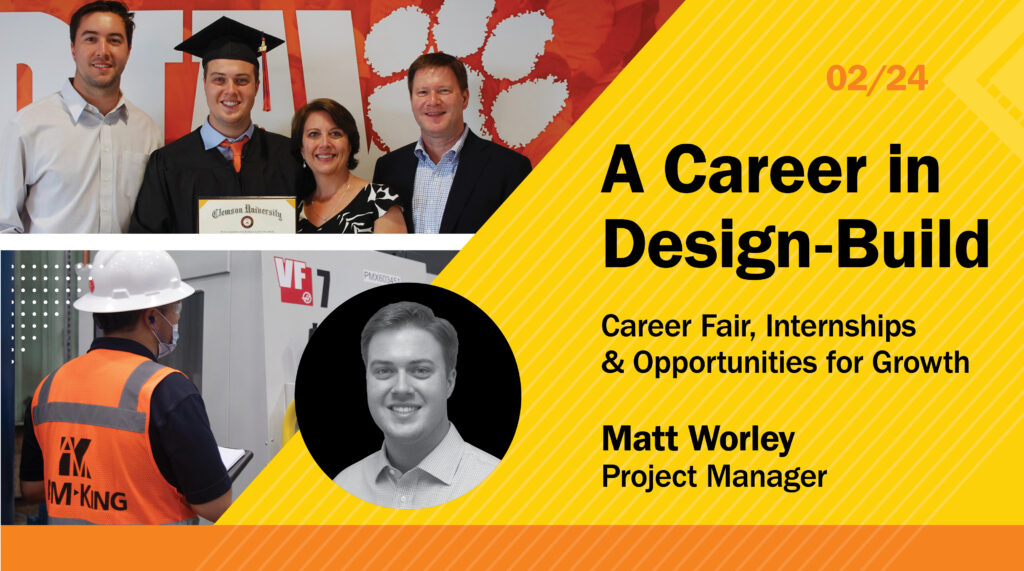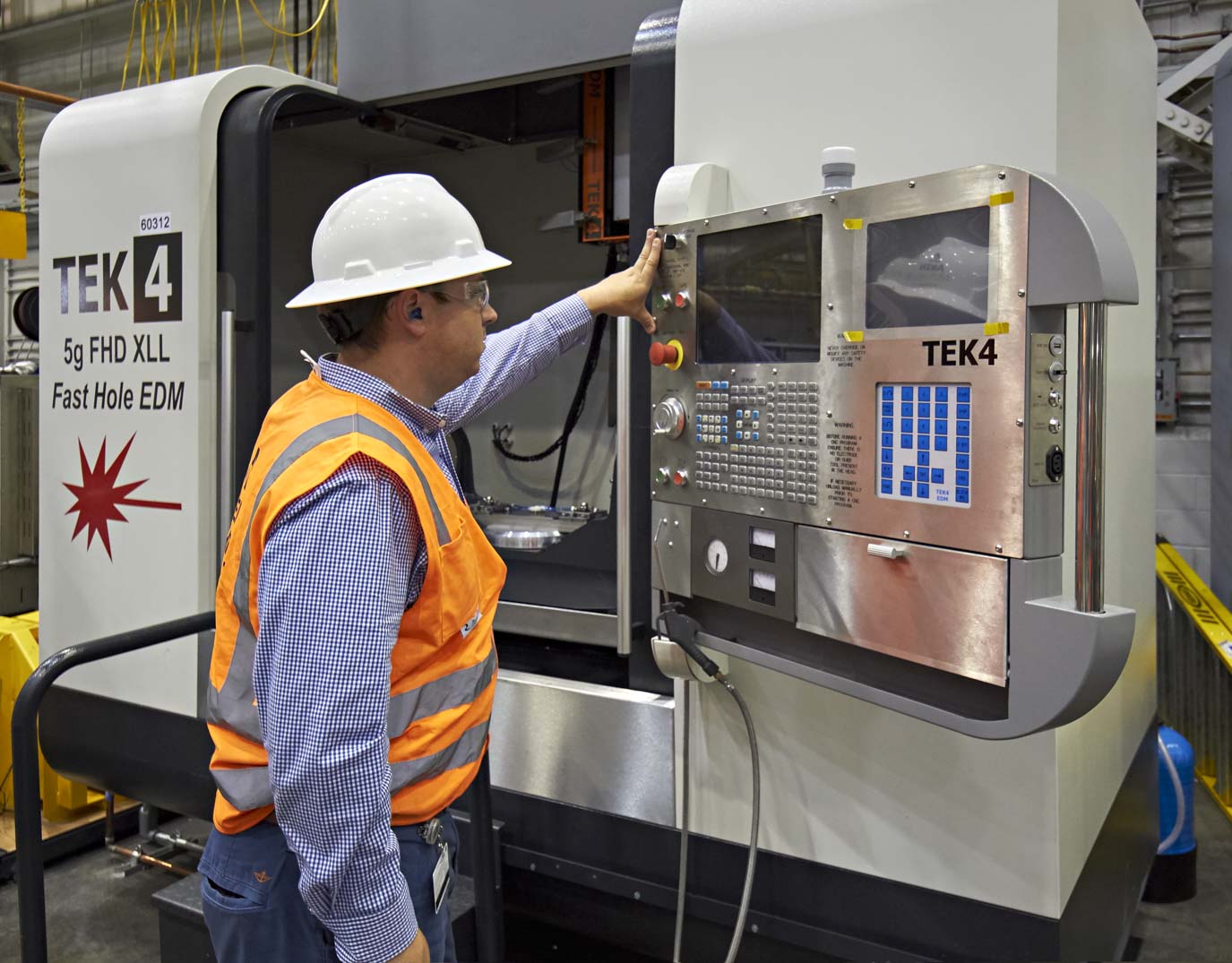
Design-Build to Achieve Lean Manufacturing
About two years ago A M King provided everyone with a Fitbit to help aid in each employee’s health and wellness efforts. At first, I was excited about having the notifications right on my wrist, but I found myself engulfed in the step tracking. If I am short of 5K steps by lunch, I take a walk at lunch. If I am short of 10K steps when I get home, I take the dog for a walk. I am surprised at how this little device is able to motivate me to get up and moving.
Steps are not always a good thing. Lean manufacturing, a term used in a variety of industries these days, often describes steps as waste, or in other words, any process that doesn’t add value for the client.
At A M King, whether it’s the development of a new facility, or in the projects we do daily — renovating and modernizing facilities — we are continually charged with assisting our clients in making their manufacturing processes more efficient through our design and construction expertise. Therefore, it’s our job to understand each client’s view of lean manufacturing and then provide our Design-Build services with the concept in mind.
From my perspective, the primary aspect of lean manufacturing is the elimination of waste in the form of inefficiencies related to labor, movements and materials essential to the manufacturing process. Thus, every time I take on a new project for a client, I remember the best practices for attaining lean manufacturing by using the eight waste-reducing efficiencies represented in the mnemonic TIMWOODS:
- T-Transport – Eliminate unnecessary movement of materials
- The flow of an entire plant needs to be considered when designing and installing a new manufacturing line. If the line is installed on one side of the plant, and parts come from the opposite side of the plant, it’s no longer a lean line.
- I-Inventory – Material and inventory storage
- Beyond manufacturing equipment layout, it is critical to design with “in-que” parts and material storage in mind. Too much space, or too little, will lead to disruptions and waste along the line.
- M-Motion – Workplace ergonomics and elimination of excessive labor movement
- Fully understanding our client’s process and procedures on a particular project is necessary to strategically position equipment to best suit the workflow and human interactions while providing a safe environment.
- W-Waiting – Wait times and down times are production killers. The inter-connectivity of a process and equipment diversity along a line can be an important aspect to consider during design to determine if wait time can be converted into production time.
- O-Over processing – Doing more than necessary
- Over-Processing can be the result of designing more than a line needs to accomplish. It is imperative that the output of each specific element is considered in order to accurately design a line that meets the needs of the facility.
- O-Over production – Doing work before it is needed
- Producing something before it is needed, or producing too much of an item is wasteful. By implementing “smart” technologies to equipment lines, our clients can quickly identify over-production waste.
- D-Defects – Reducing /eliminating mistakes and errors
- Proper installation, the use of smart technologies and the implementation of greater monitoring equipment all lead to the elimination of costly defects. It’s further important to properly commission equipment before going into full production so defect scan be eliminated to the greatest extent.
- S-Skills – Training and developing employee skill sets
- No turnover of a production line is complete until the operators are properly trained on new equipment. Hand-off procedures on new equipment always include a training session with the equipment manufacturers to ensure operators are utilizing the equipment to the best of its ability.
Regardless of how a manufacturer may define lean manufacturing, what cannot be disputed is that every manufacturer continually seeks ways to improve the efficiencies and productivity of their process, ultimately resulting in the reduction of operational costs. It’s our job during the design and construction phase to assist in these efforts.

